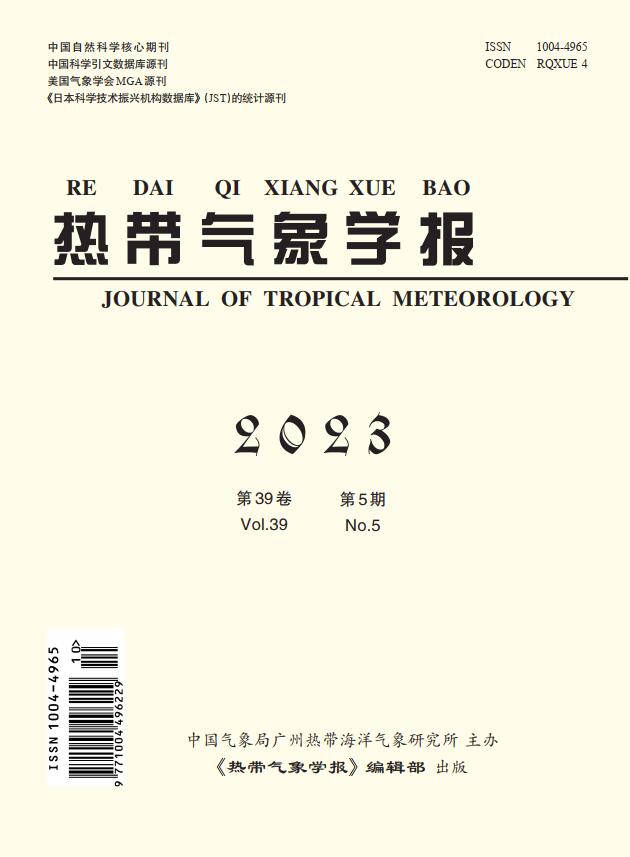Sea Surface Temperature Extremes of Different Intensity in the China Seas During the Global Warming Acceleration and Hiatus Periods
IF 1.4
4区 地球科学
Q4 METEOROLOGY & ATMOSPHERIC SCIENCES
引用次数: 1
Abstract
Based on the daily OISST V2 with 0.25o horizontal resolutions, the present study looks into the variations of sea surface temperature (SST) extremes in the China Seas for different segments of the period 1982-2013. The two segments include the warming acceleration period from 1982 to 1997 and the hiatus period from 1998 to 2013 when the global mean surface temperature (GMST) did not significantly increase as expected, or even decreased in some areas. First, we construct the regional average time series over the entire China Seas (15°-45°N, 105°-130°E) for these SST extremes. During the hiatus period, the regionally averaged 10th, 1th and 0.1th percentile of SSTs in each year decreased significantly by 0.40℃, 0.56℃ and 0.58℃ per decade, respectively. The regionally averaged 90th, 99th and 99.9th percentile of SSTs in each year decreased slightly or insignificantly. Our work confirm that the regional hiatus was primarily reflected by wintertime cold extremes. Spatially, the trends of cold extremes in different intensity were non-uniformly distributed. Cold extremes in the near-shore areas were much more sensitive to the global warming hiatus. Hot extremes exhibited non-significant trend in the China Seas during the hiatus period. In short, the variations of the SST extremes in the two periods were non-uniform spatially and asymmetric seasonally. It is unexpected that the hot and cold extremes of each year during 1998-2013 were still higher than those extremes during 1982-1997. It is obvious that compared with the warming acceleration period, hot extremes were far more likely to occur in the recent hiatus as a result of a 0.3℃ warmer shift in the mean temperature distribution. Moreover, hot extremes in the China Seas will be sustained or amplified with the end of warming hiatus and the continuous anthropogenic warming.全球变暖加速与停滞期中国海域不同强度海表温度极值
基于0.25o水平分辨率的日OISST V2,研究了1982—2013年中国海域不同时段的海温极值变化。这两个时段分别是1982 - 1997年的升温加速期和1998 - 2013年的中断期,这两个时段全球平均地表温度(GMST)没有像预期的那样显著上升,甚至在某些地区有所下降。首先,我们构建了整个中国海域(15°-45°N, 105°-130°E)海温极值的区域平均时间序列。在此期间,每年区域平均海温第10、第1和第0.1百分位分别显著降低0.40℃、0.56℃和0.58℃/ a。区域平均海温90、99和99.9百分位各年略有或不显著下降。我们的工作证实,区域中断主要反映在冬季极端寒冷。从空间上看,不同强度的极寒变化趋势不均匀。近岸地区的极端寒冷对全球变暖的中断更为敏感。断裂期中国海域极端高温趋势不显著。总之,两个时期海温极值的空间变化不均匀,季节变化不对称。1998-2013年的冷热极端值仍高于1982-1997年的冷热极端值。与增温加速期相比,由于平均温度分布偏暖0.3℃,极端高温事件发生的可能性大大增加。此外,随着全球变暖中断期的结束和人为变暖的持续,中国海域极端高温现象将持续或加剧。
本文章由计算机程序翻译,如有差异,请以英文原文为准。
求助全文
约1分钟内获得全文
求助全文
来源期刊

热带气象学报
METEOROLOGY & ATMOSPHERIC SCIENCES-
CiteScore
1.80
自引率
8.30%
发文量
2793
审稿时长
6-12 weeks
期刊介绍:
Information not localized
 求助内容:
求助内容: 应助结果提醒方式:
应助结果提醒方式:


